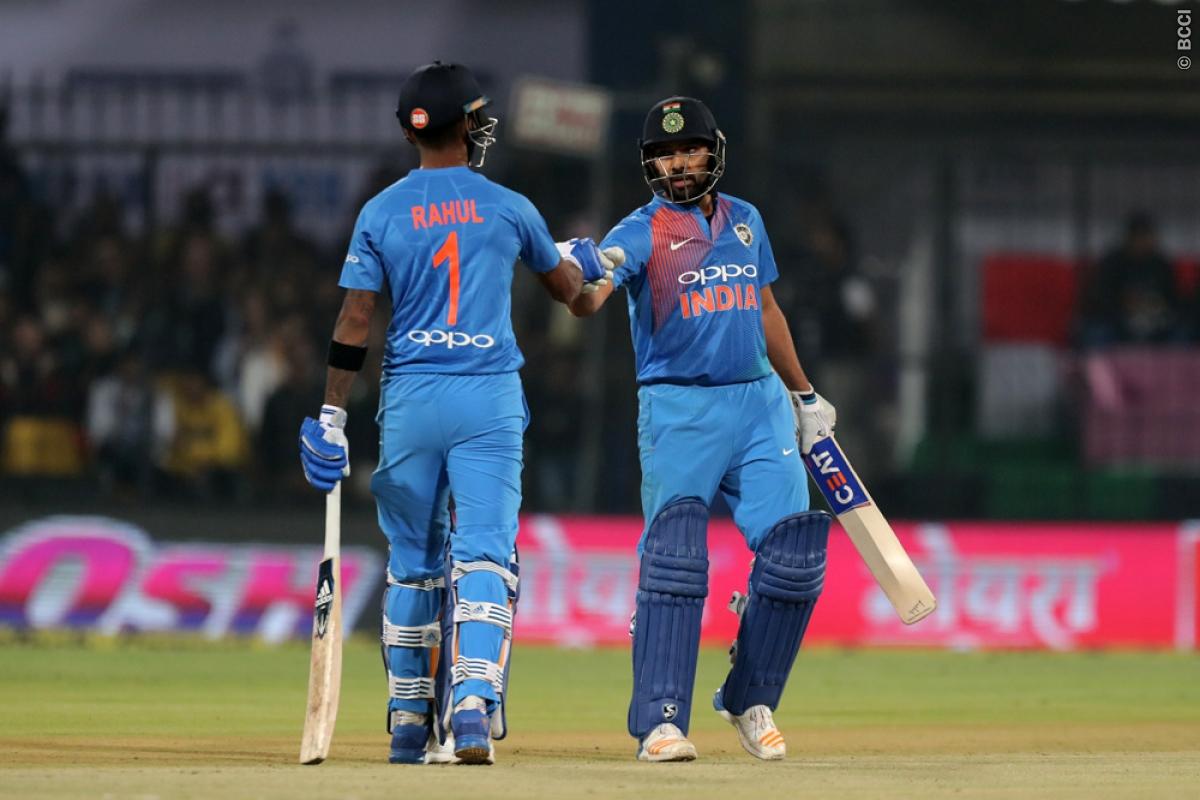Indian batsmen’s approach to T20s needs to undergo a metamorphosis
After batting first in Cape Town, the Indian top-order managed to put up a show of outrageous abilities as on a reasonably good batting wicket, they raced to 100 runs in 11 overs. However, what happened soon after that was enough to sum up India’s archaic and old-school T20 batting display.

While many would have thought that 172 was an above par score to defend, especially due to South Africa’s continuous underperformance in the tour, it is also worth noting that this hasn’t been a one-off scenario for Team India and rather something that has continued to belittle them in the last two years, including the home semi-final against the Windies in 2016, where despite a great start they failed to cross 200 and eventually lost the match.
It is an open secret that the Indian batsmen have never been famous for hitting sixes or going for big shots, but
Sample this. When West Indies scampered their way to the quarter-final of the 2014 World T20, where they were supposed to take on India, Suresh Raina played a mental game ahead of the match by saying West Indies cricketers are mainly "six hitters" and they are not good at rotating the strikes. That took to the head of Darren Sammy and West Indies, instead of playing their normal game, decided to focus more on their strike rotation and ended up being strangled by Amit Mishra’s variations.
However, the same problem cost India the next T20 World Cup, two years later, when on a batting-friendly Wankhede wicket, West Indies smashed their way to the final despite Virat Kohli's adrenaline power-surge between the wickets. So, one thing was clear from their match. Even after adopting ultra-fitness training regime and Japanese cuisine, they are yet to be considered as a proper T20 team.
Truth be told, Indian batsmen’s approach to playing T20s is not drastically different to their style in the 50-over format. They focus on partnership-building rather than going gung-ho in the middle. Start steady and then build the innings during the middle overs and then try to carry enough momentum and wickets for a late-order surge for a decent ODI total. However, this formulaic batting display has a chink attached to it. With the pitch trying to satiate the six-loving crowds, the concept of a safe T20 score is no more a valid proposition.

To India’s credit, they have three top-order batsmen who were as good as any limited-overs batsmen of the generation and have the ability to blow any bowlers reputations to smithereens. While India
Dhoni, who had made it a fashion of sitting deep in his crease and hitting bowlers for sixes with his supremely authentic bottom hand, of late, is taking a lot of balls to get into the zone and then gets out by playing non-powerful strokes, which invariably end up in the fielders’ hands near the boundary ropes. Although Manish Pandey managed to find his grooves in the second T20I in Centurion, it is to be noted that he has never been a powerful slogger of the ball and there lie India’s problems.
The cricket-mad nation has, more often than not, fallen in love with the traditional orthodox batsmen – be it a Tendulkar or a Gavaskar or a Dravid for that matter. While they happily accepted MS Dhoni’s unorthodox batting as their own, among the coaches, there is an inherent hesitancy to adopt unorthodoxy and as a result, the country despite possessing the biggest T20 league in the world is yet to see an out-and-out T20 superstar.
There is a certain sense of magic attached to Kohli, though. Over the years of his evolution, the Indian skipper has proved that he can bat in the same way across all three formats of the game and can still manage to come out on top of all the bowling units. And knowing that there is a lack of firepower during the middle-overs, especially from the over No. 8 to 16, Kohli, despite being a serial aggregator, has been forced to take risks which have resulted in a cascading effect in the team's fortune.
The demands of the modern-day game have also been changing drastically and carefully-crafted bowling tactics are enough to curb the run flow. While relying on the textbook is actually fine for the all-round development of one’s game, having a reverse-sweep or a scoop shot would help any batsmen score effortlessly in the abridged version of the game.
Sample an AB de Villiers or a Jos Buttler or a Glenn Maxwell for example. They have been successful T20 players of the generation and that has become possible because of their propensity of hitting big hits without thinking much. Their shots have mostly been premeditated unlike the Indian batsmen, who rely mostly on their instincts. When a batsman comes in at a crucial situation like 16th over, you can’t afford to play out deliveries to find your groove. It is a make or
Winning is fine but to sustain it for a

Comments
Sign up or log in to your account to leave comments and reactions
0 Comments